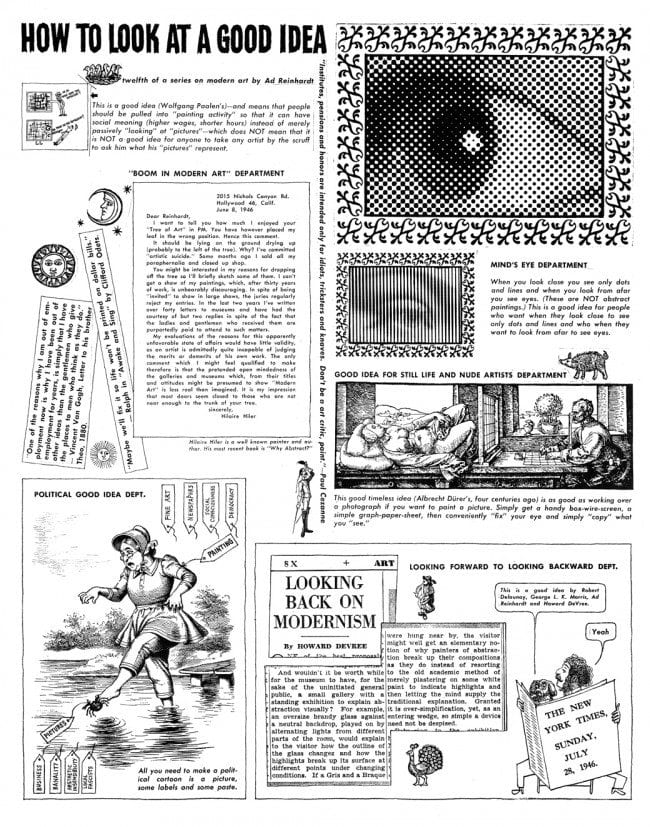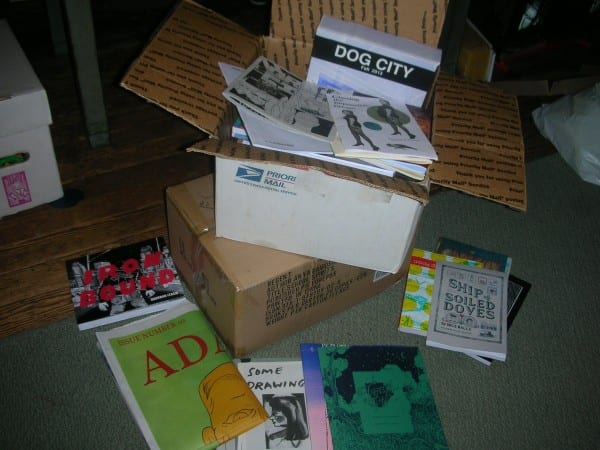On the site today: Frank Santoro talks tour swag. The endless tour swag. Swag!
And Sarah Boxer on Joe Sacco's The Great War: July 1, 1916: The First Day of the Battle of the Somme, an Illustrated Panorama
In the history of comics, Sacco’s Great War lies somewhere between two other near-silent comic-like narratives: the medieval Bayeux Tapestry, a 230-foot-long piece of embroidery showing the Norman Invasion of England in 1066 (which Sacco cites as an influence), and Building Stories, Chris Ware’s giant box of comic-book-like objects. But for sheer silence these two can’t compete with The Great War. After all, the Bayeux tapestry has embroidered captions that tell you what’s going on, and Chris Ware allows his characters occasional grunts and sniffs. Here Sacco, the cartoonist of human speech and argument, has banned all words.
Elsewhere:
No links today. Instead let me digress for a second.
It's been a good autumn in New York for those interested in comics and comics-related art. There were shows by three Chicago masters: Gladys Nilsson, Karl Wirsum and Art Green; a small but potent show of Peter Saul paintings a A fine exhibition by Seth. And there is, of course, the terrific Art Spiegelman retrospective, about which more later. And now there's an Ad Reinhardt show at David Zwirner (home also to R. Crumb and Raymond Pettibon). Yes, Ad Reinhardt, king of the all-black painting. An unlikely man to make comics. And yet there it is. The Reinhardt show is not just any exhibition though: It features a complete run of his comics work for P.M. (for which Crockett Johnson, among others, also drew) and ARTnews in the 1940s and '50s. And to top it off, Zwirner has published an absolutely killer book of these comics: How to Look: Art Comics. Oversized, impeccably designed and printed, it's my favorite surprise of the year. One of those books you dream of but never imagine really happening. It belongs with the recent Jess book, as well as the Joe Brainard Nancy book (both from Siglio Press), to a now-growing shelf of comics that exist outside both the comic and art narratives. An odd shaped history into which you might also throw the 1960s Hairy Who "comic books", various works by Dieter Roth, a ton of books by Dorothy Iannone, and all sorts of other odds and ends. 
How to Look: Art Comics is an oversized hardcover with a superb essay by Robert Storr, none of which would matter if the comics weren't so damn good. These are more like visual essays in the Peter Blegvad-sense than the newspaper comics of the time, but what else could they be, really? Each comics page is a collage of paste-up imagery and often-punning, always cunning, words, commenting on, well, art. From "The Insiders" to "How to Look at Iconography" to "How to Look at a Mural" (Guernica, of course), Reinhardt winkingly guides viewers through art as he knew it. Along the way there are many now-forgotten artists, critics, curators and galleries, and many still known. But trace-the-reference is only part of the fun. The elegance of Reinhardt's compositions, the deftness with which he juxtaposes text and image, and his infrequent, but jarring use of hand-drawn cartooning make each strip a gem. This work should be brought into comics proper, and perhaps viewed as paradigmatic examples of the comic-as-diagram or the comics-as-explanation, much as Scott McCloud and Dan Zettwoch have used it. Anyhow, all of this is to say: Go out and see the show if you're in NYC, and get the book in any case. It's an education in art and cartooning.








